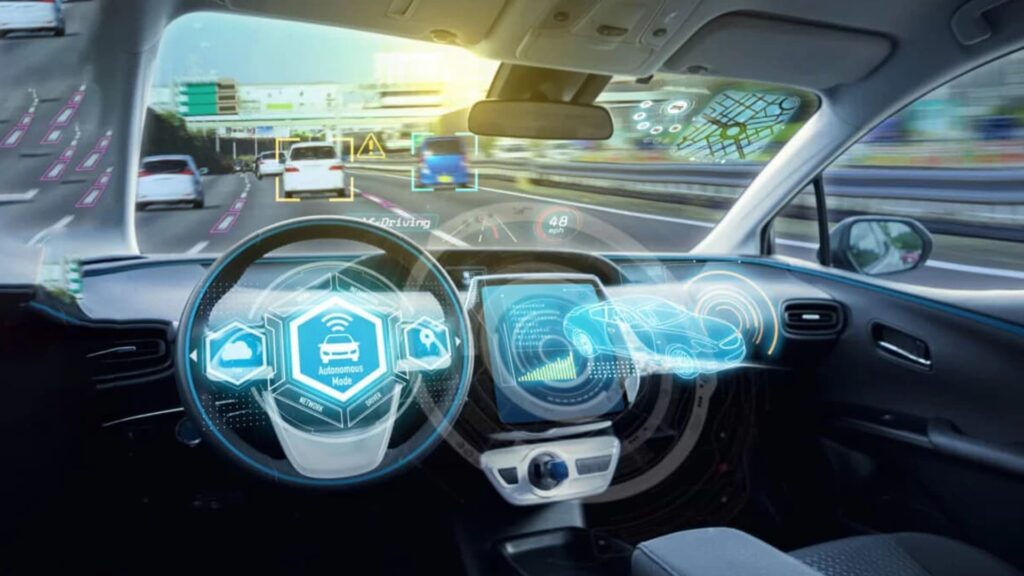From an ambitious idea to a quickly developing reality, self-driving cars have the potential to transform transportation completely. As 2025 approaches, the importance moves from indicating that Next-generation autonomous vehicles (AVs) are possible to resolving significant obstacles and realizing their full potential. This study describes the important next stages in AV adoption that are safer, more intelligent, and more pervasive.
The transportation sector is changing due to the quick development of autonomous vehicle (AV) technology. It is anticipated that advancements in artificial intelligence (AI), networking, and legal frameworks will boost the increasing integration of self-driving cars into everyday life by 2025.
Self-driving cars, also known as autonomous vehicles, are transforming transportation by doing away with the need for human drivers. These cars offer improved safety, less traffic, and greater accessibility by utilizing AI, sensors, and sophisticated algorithms.
Both the public and private transportation sectors will see an increase in the use of autonomous cars by 2025. With improvements in AI, connectivity, and enabling regulations, autonomous vehicles (AVs) have the potential to solve important societal issues and provide substantial advantages. For self-driving technology to reach its full potential, strategic investment, teamwork, and creativity are needed.
The Contribution of Data in Improving Self-driving Car Safety
One of the main pillars of autonomous vehicle (AV) advancement has always been the number of miles driven. The key to improving self-driving car technology algorithms is data, and more kilometers translate into more data. Recently, businesses competing for a competitive edge fiercely protected this important information. But as data sharing becomes a crucial tactic to guarantee security and spur advancement in AV technology, the paradigm is changing.
Due to proprietary technical concerns, AV companies have always protected their road-driving datasets. Academic researchers were only able to access a small number of datasets due to the expensive expense of data collecting, which limited their options for investigation and creativity. However, top developers have started making datasets publicly available in recent years, laying the groundwork for more extensive experimentation and cooperation.
Advantages of Data Collaboration in Car Technology

1. Increased Security
By exchanging driving scenarios, businesses can work together to close data gaps and create AV car technology systems that are safer and more dependable. Every business can test its technology in various settings, enhancing performance under more circumstances.
2. Interoperability and Standardization
Establishing a common understanding of the road environment is facilitated by collaboration on shared datasets. This enhances the smooth interaction between various AV systems, particularly in complicated or dangerous scenarios.
3. Establishing Credibility
For the public to have faith in self-driving car technology, transparency is essential. Greater acceptance of AVs is made possible by open datasets, which increase trust in the development process.
4. Frameworks for Regulation
Establishing a common database of driving situations is a first step toward the creation of transparent, uniform safety metrics. Using this data, regulators can create relevant norms that will guarantee industry-wide uniformity.
Problems and Fixes in Self-driving car

1. Establishing Common Guidelines
Standardized measurements, a uniform arrangement, and a common vocabulary for expressing autonomous driving situations are necessary for a shared database.
2. Offering Rewards for Involvement
Businesses may be reluctant to divulge information for fear of losing their competitive advantage. Promoting industry-wide collaboration requires the development of systems that incentivize involvement while safeguarding private data.
3. Overcoming Technical Obstacles
Strong technical solutions are required to address technical challenges including handling and organizing huge databases and guaranteeing data consistency.
Safety in Self-driving car: The Basis for Adoption and Trust

The development of autonomous vehicles continues to be based on safety. Although AVs have the potential to cut road deaths, which presently number over 1.35 million annually worldwide, they must first prove to be incredibly reliable before they can be widely adopted.
- Measures to Make AVs Safer: Data Sharing for Safety Standards: Businesses are starting to exchange datasets to spur innovation and establish industry-wide safety standards.
- Simulation and Real-World Testing: By utilizing both real-world testing and millions of simulated miles, AV systems are guaranteed to be ready for a variety of difficult situations.
- Dependable AI decision-making Improved AV reactions in unpredictable situations, including severe weather or abrupt road changes, depend heavily on improved machine learning algorithms.
Regulatory Frameworks: Providing Supervision to Encourage Innovation
Governments and regulatory agencies are crucial in determining how AV technology develops in the future. Adoption has been hindered by a lack of worldwide standards, but major progress in this field is anticipated in 2025.
- Regulation’s Next Steps: Integrated Safety Metrics Regulators will be able to evaluate AV safety thoroughly thanks to standardized evaluation standards based on common driving scenarios.
- AI Ethics Guidelines: Regulatory talks will focus on addressing moral quandaries, such as how an AV prioritizes safety in accidents that cannot be avoided.
- Frameworks for Liability: Establishing public trust and clarifying insurance plans require clear criteria on culpability in AV-related incidents.
Infrastructure Improvements: Constructing AV-Friendly Smart Cities

AVs require intelligent infrastructure that can support their cutting-edge technologies to succeed. To maximize the performance of self-driving cars, both the public and private sectors need to invest in linked settings.
Infrastructure Initiatives: V2X Technology (Vehicle-to-Everything): Improved navigation and traffic control will result from smooth communication between cars, traffic signals, and road sensors.
5G Networks: For real-time data transmission, AV response, and accident reduction, ultra-low latency communication is crucial.
Dedicated Lanes for AVs: To reduce hazards and expedite traffic, highways, and cities may implement AV-specific lanes.
Nonetheless, there are serious concerns about how the development of self-driving cars may affect fairness, employment, and society. Securing public approval will require proactively addressing these issues.
Workforce Transition: Millions of jobs in the transportation industry may be lost as driving responsibilities become more automated. To assist impacted workers, policymakers must put reskilling initiatives into place.
Equity and Accessibility: Making AV technology available to marginalized communities can help in closing opportunities and mobility disparities.
Privacy and Data Security: It’s critical to strike a balance between protecting user privacy and using data to enhance antivirus performance.
The rate at which AVs become a commonplace reality will depend on how quickly advances in AI, sensor systems, and battery efficiency occur.
- Important New Developments in the Future: Next-Generation AI Increasing AI’s capacity to comprehend complicated settings will improve judgment and lower mistakes.
- Advanced Sensors: Lidar, radar, and camera systems are improving in accuracy and affordability, which makes it possible to identify barriers and things more accurately.
- Autonomous and Electric Collaboration: Transportation systems will become greener and more efficient when autonomous driving and electric vehicle (EV) platforms merge.
One major obstacle to AV technology’s mainstream adoption is still its cost.
Campaigns for Education: Demystifying AV technology will involve educating the public about its advantages, limitations, and safety precautions.
Pilot Initiatives: Pilot programs that provide communities with a firsthand look at AVs will show their dependability and usefulness.
Ethical Development: To overcome opposition and build credibility, businesses must put safety and openness first.
There are many obstacles in the way of the general adoption of AVs, but cooperation between the public, legislators, and business leaders will open the door to a safer and more effective transportation future. Autonomous vehicles transforming mobility in 2025 is attainable by putting safety first, improving legislation, modernizing infrastructure, and resolving ethical issues.
A revolutionary step toward cleaner cities, more equitable access to transportation, and smarter cities self-driving cars are more than just a technological marvel. The promise of driverless cars will become a reality with sustained work, completely changing the way we travel around the globe.













